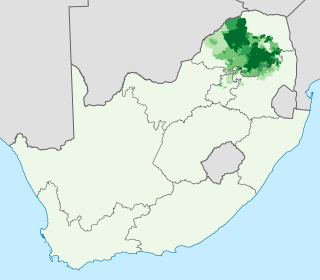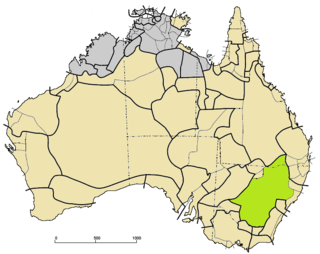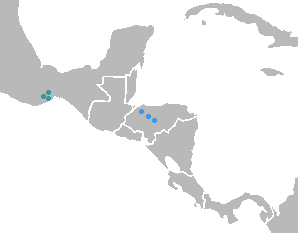British English is the set of varieties of the English language native to the island of Great Britain. More narrowly, it can refer specifically to the English language in England, or, more broadly, to the collective dialects of English throughout the British Isles taken as a single umbrella variety, for instance additionally incorporating Scottish English, Welsh English, and Ulster English. Tom McArthur in the Oxford Guide to World English acknowledges that British English shares "all the ambiguities and tensions [with] the word 'British' and as a result can be used and interpreted in two ways, more broadly or more narrowly, within a range of blurring and ambiguity".

The Berber languages, also known as the Amazigh languages or Tamazight, are a branch of the Afroasiatic language family. They comprise a group of closely related but mostly mutually unintelligible languages spoken by Berber communities, who are indigenous to North Africa. The languages are primarily spoken and not typically written. Historically, they have been written with the ancient Libyco-Berber script, which now exists in the form of Tifinagh. Today, they may also be written in the Berber Latin alphabet or the Arabic script, with Latin being the most pervasive.
Evolutionary linguistics or Darwinian linguistics is a sociobiological approach to the study of language. Evolutionary linguists consider linguistics as a subfield of sociobiology and evolutionary psychology. The approach is also closely linked with evolutionary anthropology, cognitive linguistics and biolinguistics. Studying languages as the products of nature, it is interested in the biological origin and development of language. Evolutionary linguistics is contrasted with humanistic approaches, especially structural linguistics.
Ethnologue: Languages of the World is an annual reference publication in print and online that provides statistics and other information on the living languages of the world. It is the world's most comprehensive catalogue of languages. It was first issued in 1951, and is now published by SIL International, an American evangelical Christian non-profit organization.
K, or k, is the eleventh letter in the Latin alphabet, used in the modern English alphabet, the alphabets of other western European languages and others worldwide. Its name in English is kay, plural kays. The letter K usually represents the voiceless velar plosive.

Sepedi, formerly called Sesotho sa Lebowa an official language for Lebowa homeland during apartheid, is a Sotho-Tswana language group spoken in the northeastern provinces of South Africa. It is commonly referred to in its standardized form as Pedi or Sepedi and holds the status of an official language in South Africa.

The Oxford English Dictionary (OED) is the principal historical dictionary of the English language, published by Oxford University Press (OUP). It traces the historical development of the English language, providing a comprehensive resource to scholars and academic researchers, as well as describing usage in its many variations throughout the world.
Old English, or Anglo-Saxon, is the earliest recorded form of the English language, spoken in England and southern and eastern Scotland in the early Middle Ages. It developed from the languages brought to Great Britain by Anglo-Saxon settlers in the mid-5th century, and the first Old English literary works date from the mid-7th century. After the Norman Conquest of 1066, English was replaced, for a time, by Anglo-Norman as the language of the upper classes. This is regarded as marking the end of the Old English era, since during this period the English language was heavily influenced by Anglo-Norman, developing into a phase known now as Middle English in England and Early Scots in Scotland.

Phonology is the branch of linguistics that studies how languages systematically organize their phones or, for sign languages, their constituent parts of signs. The term can also refer specifically to the sound or sign system of a particular language variety. At one time, the study of phonology related only to the study of the systems of phonemes in spoken languages, but may now relate to any linguistic analysis either:

The Americas, sometimes collectively called America, are a landmass comprising the totality of North and South America. The Americas make up most of the land in Earth's Western Hemisphere and comprise the New World.
An idiom is a phrase or expression that usually presents a figurative, non-literal meaning attached to the phrase. Some phrases which become figurative idioms, however, do retain the phrase's literal meaning. Categorized as formulaic language, an idiom's figurative meaning is different from the literal meaning. Idioms occur frequently in all languages; in English alone there are an estimated twenty-five million idiomatic expressions.

Pussy is a term used as a noun, an adjective, and—in rare instances—a verb in the English language. It has several meanings, as slang, as euphemism, and as vulgarity. Most commonly, it is used as a noun with the meaning "cat", "coward", or "weakling". In slang usage, it can mean "vulva or vagina" and less commonly, as a form of synecdoche, meaning "sexual intercourse with a woman". Because of its multiple senses including both innocent and vulgar connotations, pussy is often the subject of double entendre.

A word is a basic element of language that carries meaning, can be used on its own, and is uninterruptible. Despite the fact that language speakers often have an intuitive grasp of what a word is, there is no consensus among linguists on its definition and numerous attempts to find specific criteria of the concept remain controversial. Different standards have been proposed, depending on the theoretical background and descriptive context; these do not converge on a single definition. Some specific definitions of the term "word" are employed to convey its different meanings at different levels of description, for example based on phonological, grammatical or orthographic basis. Others suggest that the concept is simply a convention used in everyday situations.

Kurukh, also Kurux, Oraon or Uranw, is a Dravidian language spoken by the Kurukh (Oraon) and Kisan people of East India. It is spoken by about two million people in the Indian states of Jharkhand, Chhattisgarh, Odisha, West Bengal, Assam, Bihar and Tripura, as well as by 65,000 in northern Bangladesh, 28,600 of a dialect called Uranw in Nepal and about 5,000 in Bhutan. Some Kurukh speakers are in Andaman and Nicobar Islands. It is most closely related to the Malto language. It is marked as being in a "vulnerable" state in UNESCO's list of endangered languages. The Kisan dialect has 206,100 speakers as of 2011.
The Alacalufan languages or Kawesqaran languages are a small language family of South America. They have not been definitely linked to any other American language family.

Wiradjuri is a Pama–Nyungan language of the Wiradhuric subgroup. It is the traditional language of the Wiradjuri people of Australia. A revival is underway, with the language being taught in schools. Wiraiari and Jeithi may have been dialects.
J, or j, is the tenth letter in the Latin alphabet, used in the modern English alphabet, the alphabets of other western European languages and others worldwide. Its usual name in English is jay, with a now-uncommon variant jy. When used in the International Phonetic Alphabet for the voiced palatal approximant it may be called yod or jod.
Gender-neutral language or gender-inclusive language is language that avoids reference towards a particular sex or gender. In English, this includes use of nouns that are not gender-specific to refer to roles or professions, formation of phrases in a coequal manner, and discontinuing the collective use of male or female terms. For example, the words policeman and stewardess are gender-specific job titles; the corresponding gender-neutral terms are police officer and flight attendant. Other gender-specific terms, such as actor and actress, may be replaced by the originally male term; for example, actor used regardless of gender. Some terms, such as chairman, that contain the component -man but have traditionally been used to refer to persons regardless of sex are now seen by some as gender-specific. An example of forming phrases in a coequal manner would be using husband and wife instead of man and wife. Examples of discontinuing the collective use of terms in English when referring to those with unknown or indeterminate gender as singular they, and using humans, people, or humankind, instead of man or mankind.

Jicaquean, also known as Tolan, is a small language family of Honduras. There are two attested Jicaquean languages, Tol and Western Jicaque, which Campbell (1997) reports were about as distant as English and Swedish. Only Tol survives.

The Kartvelian languages are a language family indigenous to the South Caucasus and spoken primarily in Georgia. There are approximately 5.2 million Kartvelian speakers worldwide, with large groups in Russia, Iran, the United States, the European Union, Israel, and northeastern Turkey. The Kartvelian family has no known relation to any other language family, making it one of the world's primary language families.











